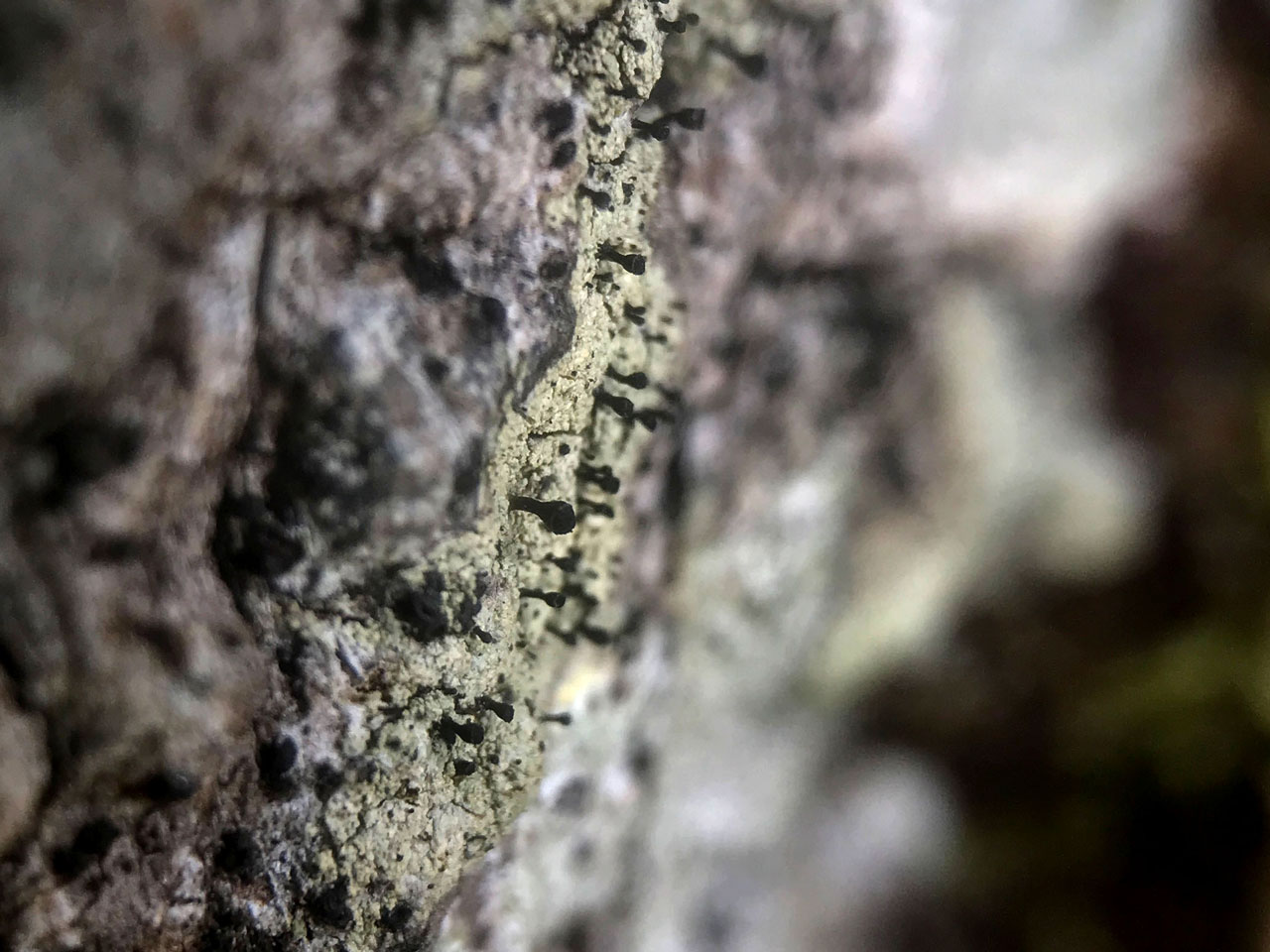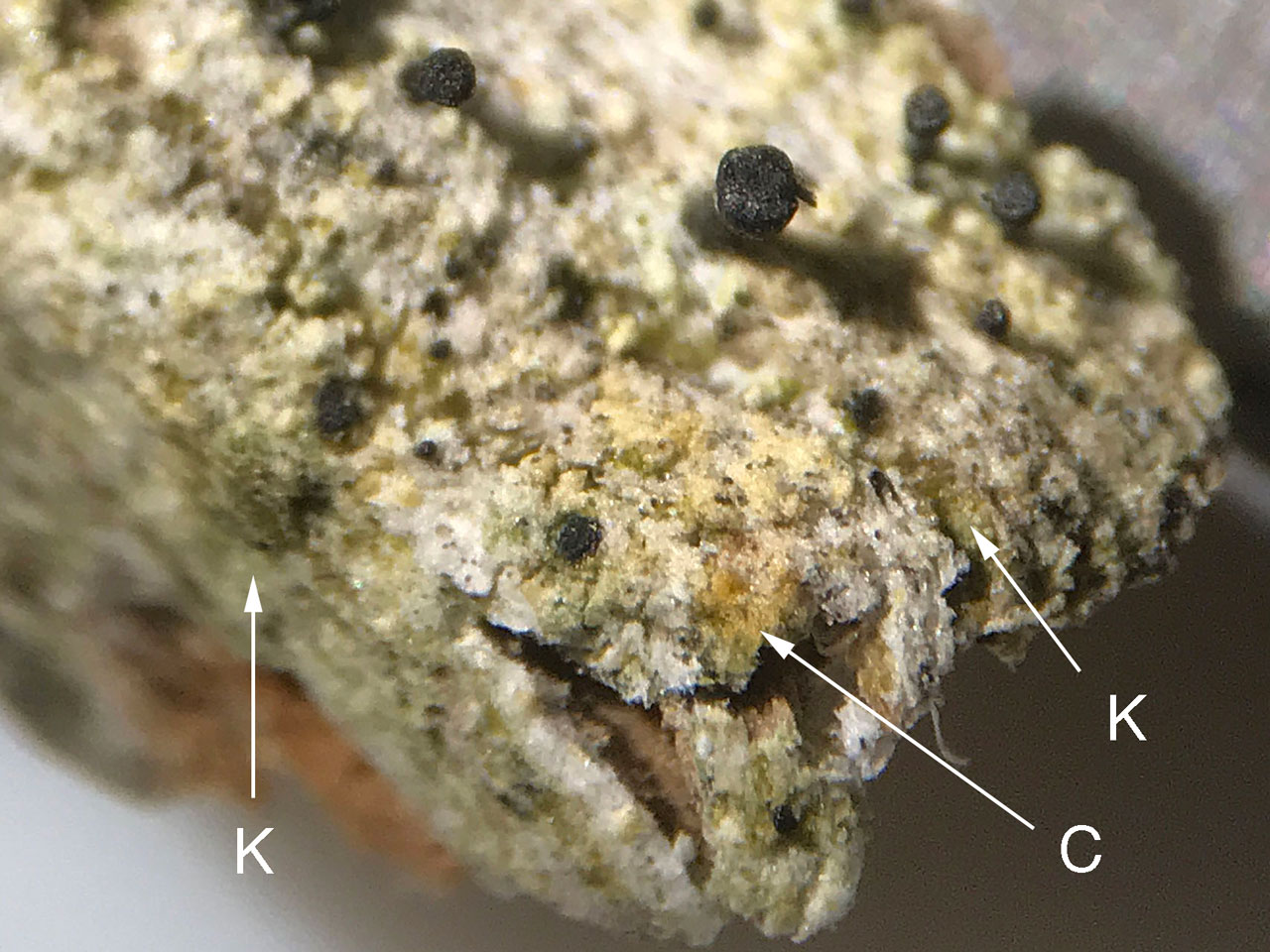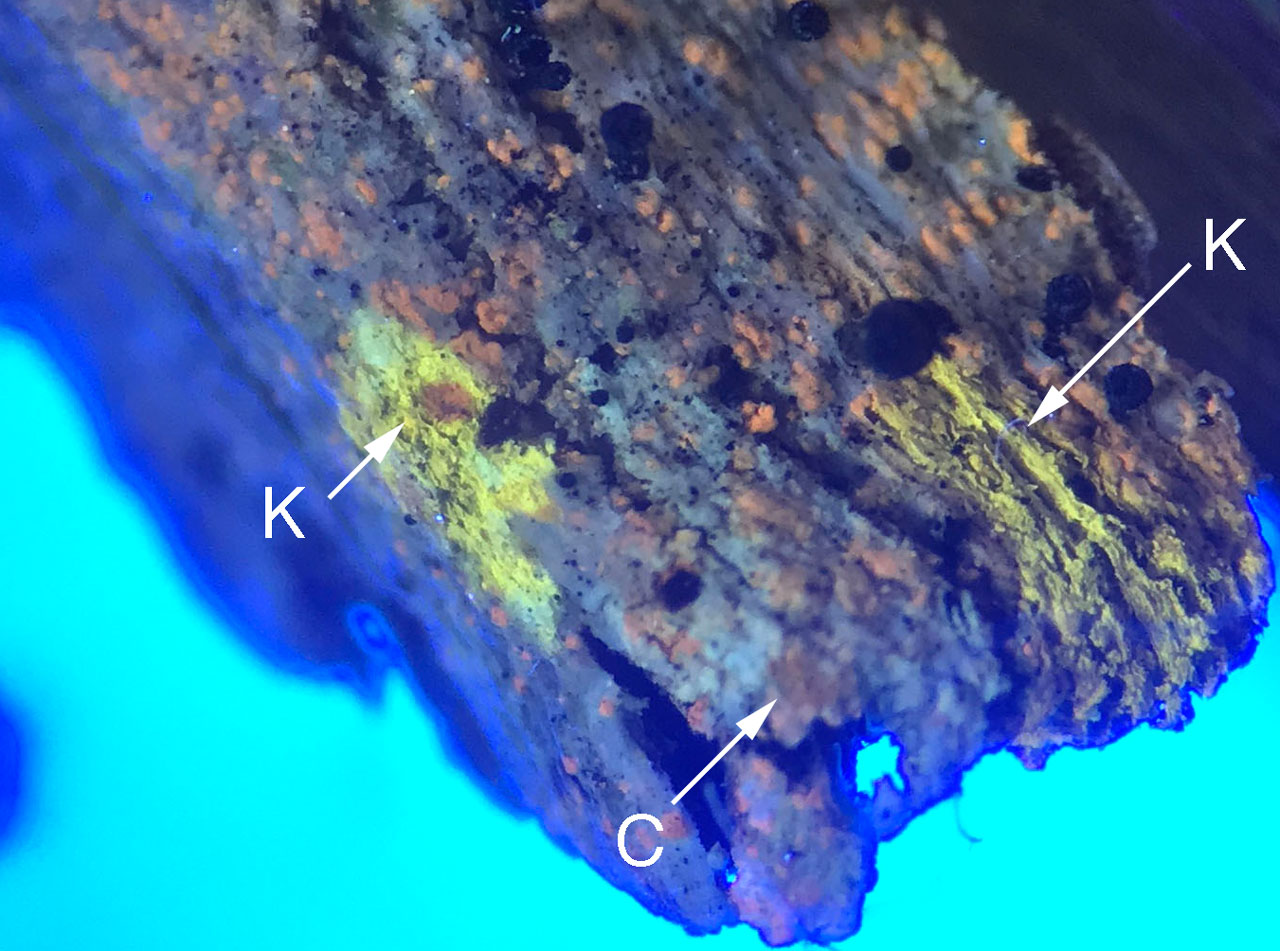Calicium hyperelloides
A widespread pinhead lichen in the tropics but very rare in Europe. Found in the New Forest in 2004 on a single veteran Oak tree, which fell over shortly after. However, since refound there and on a few other sites in the south west and in Ireland, on veteran Oaks and on lignum on fallen Oak trunks in old growth woodlands. Appears very rare, but likely to be overlooked in other high quality sites. Distinctive in the combination of a verrucose yellowish thallus and the C+ orange spot test.
Thallus minutely verrucose to almost immersed, greenish to yellowish green. Ascomata 0.48–0.65 mm tall, not pruinose or sometimes with a white pruina of minute crystals on the lower side of the head, 4–5.5 times as tall as the diameter of the stalk, all parts of the ascomata I–; head 0.17–0.27 mm diam., the exciple formed by dark brown, elongate and interwoven hyphae with thickened walls, or of almost isodiametric cells; hypothecium dark brown, with convex upper surface; inner surface of the exciple sometimes lined by a layer of minute crystals that appears as a yellow lining of the border of the mazaedium; stalk 90–150 μm diam., not pruinose, shining black. Asci cylindrical with uniseriate spores, 41–45 × 4.7–5.7 μm. Ascospores ellipsoidal, with a minutely uneven and cracked surface, 10.9–12.7 × 5.2–6 μm. Thallus usually C+ orange, C/UV–, K+ dull yellow, K/UV+ bright yellow, KC+ orange-red, Pd–, UV+ dark orange. Some specimens contain arthothelin, thiophanic acid, and thuringione, others arthothelin and thiophanic acid only. In addition, smaller amounts of unidentified xanthones occur. Several specimens contain only traces of unidentified compounds or have no detectable amounts of secondary substances.
The colour and C+ orange reaction of the thallus separate this species from C. glaucellum which has similar ascomata. Calicium lenticulare also has a UV + dark orange thallus and grows on damper bark and lignum, which has caused some confusion, but this differs in the C– to + faint yellow spot test, which is also is C/UV+ bright yellow and usually has a granular thallus.
On well lit to partly shaded, easily wetted Quercus bark and lignum in old growth pasture woodlands and in parklands.

Rare, S. England (Cornwall, New Forest), Isles of Scilly, S.W. Wales (Carmarthenshire), N. Ireland (Fermanagh). Potentially elsewhere in the south west of Britian and should be looked out for.
Likely to occur in other sites in the south west, but appears rare and occurs on very few trees in the known sites and so far found mainly in high quality old growth woodlands and parklands. Appears light demanding and potential threatened by increasing shade if woods of parks become under grazed.
Britain: Critically Endangered
Cannon, P., Prieto, M., Coppins, B., Sanderson, N., Scheidegger, C. & Simkin, J. (2021). Caliciales: Caliciaceae, including the genera Acolium, Amandinea, Buellia Calicium Diploicia, Diplotomma, Endohyalina, Monerolechia, Orcularia, Pseudothelomma, Rinodina and Tetramelas. Revisions of British and Irish Lichens 15: 1-35.
Text by Neil A Sanderson, based Cannon et al (2021)




